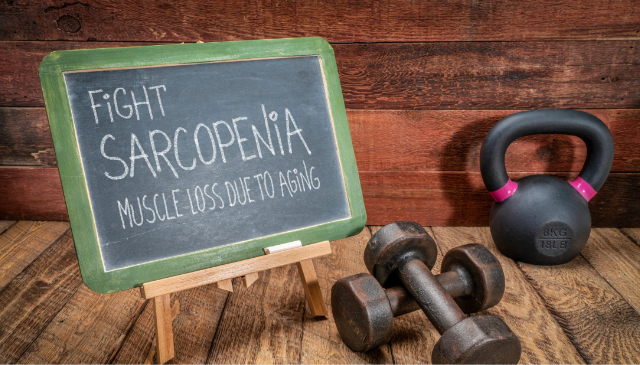News
Move More, Age Better: How Exercise Can Slow Down the Aging Process

The global population is aging at an unprecedented rate. By 2050, the number of adults over 65 will double to 1.5 billion people, while the number of those over 80 will triple to 426 million. These totals will represent the highest number of older adults alive at any time in history, which will drastically alter the healthcare landscape. These big changes also show that providing evidence–based guidance on healthy aging is more important now than ever.
While we all inevitably age, the way we age can vary for each person. Our genes play a part, but our choices–especially staying active–can make a huge difference in how well we age. Exercise isn't just good for staying fit. Research shows that it actually slows down aging, prevents many diseases, and helps people stay independent longer.
What Happens to Our Bodies as We Age
As we age, our bodies naturally go through changes that can impact our health and quality of life. Some of the most common challenges include the following:
- Sarcopenia: Muscles get smaller and weaker due to a condition called sarcopenia. This can make daily activities harder and lead to falls, fractures, and a loss of independence.
- Joint pain and stiffness: Joints become stiff and sometimes painful from conditions like osteoarthritis and rheumatoid arthritis, making movement more difficult.
- Heart problems and diabetes: The risk of cardiovascular and metabolic conditions–like diabetes–becomes significantly higher with advanced age.
- Cognitive decline: Memory loss and reduced mental sharpness tend to occur gradually over time, making otherwise–simple tasks more difficult.
- Frailty and reduced balance: As strength, balance, and flexibility slowly wane, getting around in daily activities may become challenging and potentially require mobility assistance.
How Exercise Slows Aging and Boosts Health
Anti–aging is a massive industry these days, with seemingly countless supplements, tonics, and ointments now available that claim to slow down or reverse the aging process. While we're not in a position to assess the truth of these claims, we can say with certainty that one intervention is simple and backed by a mountain of evidence: movement. Moving frequently is perhaps more important than any other lifestyle change you can make, and a recently published study has shown that exercise works like medicine for aging bodies by changing what happens in our cells and slowing down the aging process.
Here's how exercise helps:
- Keeps your muscles and bones strong: As stated previously, we naturally lose muscle and bone as we age. Strength training (like lifting weights or doing push–ups) helps build muscle, strengthens bones, and keeps you moving easily.
- Protects your heart and prevents disease: Regular exercise lowers your chances of getting heart disease, diabetes, and even some cancers. Activities that make your heart beat faster (like walking, biking, or swimming) keep your heart and lungs working well.
- Helps your brain stay sharp: Exercise increases blood flow to your brain, which improves memory and thinking. Activities that require coordination, like dancing or tai chi, have been shown to help prevent memory problems.
- Improves balance and prevents falls: Falls can cause serious injuries for older adults. Balance exercises (like standing on one foot or yoga) improve your stability and coordination.
- Makes you feel happier: Physical activity releases chemicals in your brain that improve your mood. It also helps reduce stress, anxiety, and depression, which are common in older adults.
How Much Exercise Do You Need?
Once you recognize how vital regular exercise is for your body, your next question may be: how often should I do it? Health experts typically recommend mixing different types of exercise for optimal aging. Here are some general guidelines:
- Aerobic exercise: Aerobic exercise is any movement that increases your heart rate, which means it includes household chores–like cleaning and gardening–in addition to traditional exercise pursuits. Most health organizations recommend at least 150 minutes of moderate activity (like brisk walking) or 75 minutes of vigorous activity (like jogging) each week. However, don't be deterred by these numbers–you can start small and gradually increase your activity.
- Strength training: Try to incorporate some type of strength training for all your major muscle groups (arms, legs, and core, for example) twice each week.
- Balance and stretching: Regularly participating in activities like yoga or tai chi can be a huge boost for your balance and flexibility.
We Can Help You Write Your Own Aging Story
Aging is inevitable, but losing strength, independence, and vitality doesn't have to be. Exercise is one of the most powerful tools available to maintain a high quality of life as you grow older, and we can help you make it a regular part of your routine. Whether you're in your 50s, 60s, or beyond, it's never too late to start moving and reap the benefits.
If you're interested in staying strong and healthy as you age, contact our physical therapy team today! We'll work with you to create an exercise plan tailored to your needs.
For additional details on the study featured in this newsletter, visit the journal's website.
April 24, 2025
Disclaimer:
The information in the articles, posts, and newsfeed is intended for informational and educational purposes only and in no way should be taken to be the provision or practice of physical therapy, medical, or professional healthcare advice or services. The information should not be considered complete or exhaustive and should not be used for diagnostic or treatment purposes without first consulting with your physical therapist, occupational therapist, physician or other healthcare provider. The owners of this website accept no responsibility for the misuse of information contained within this website.
